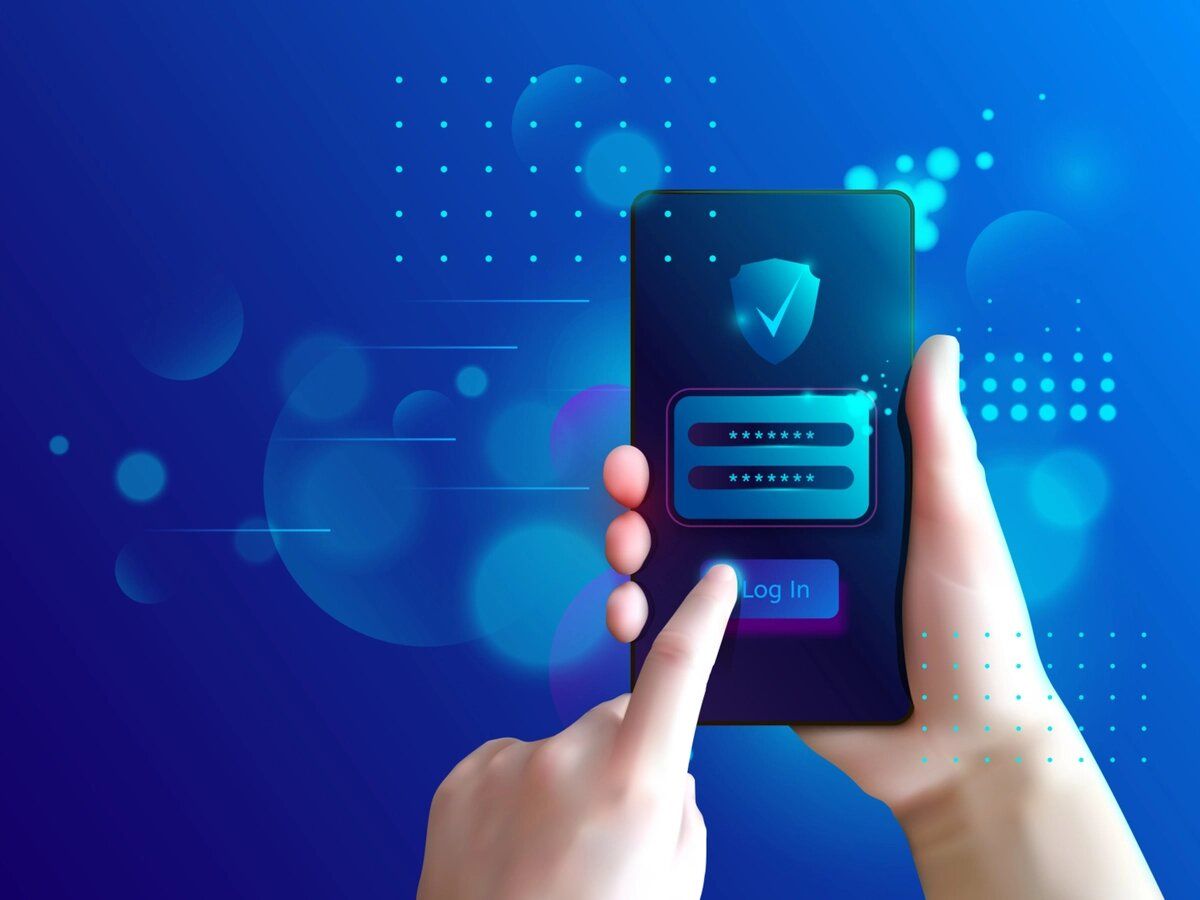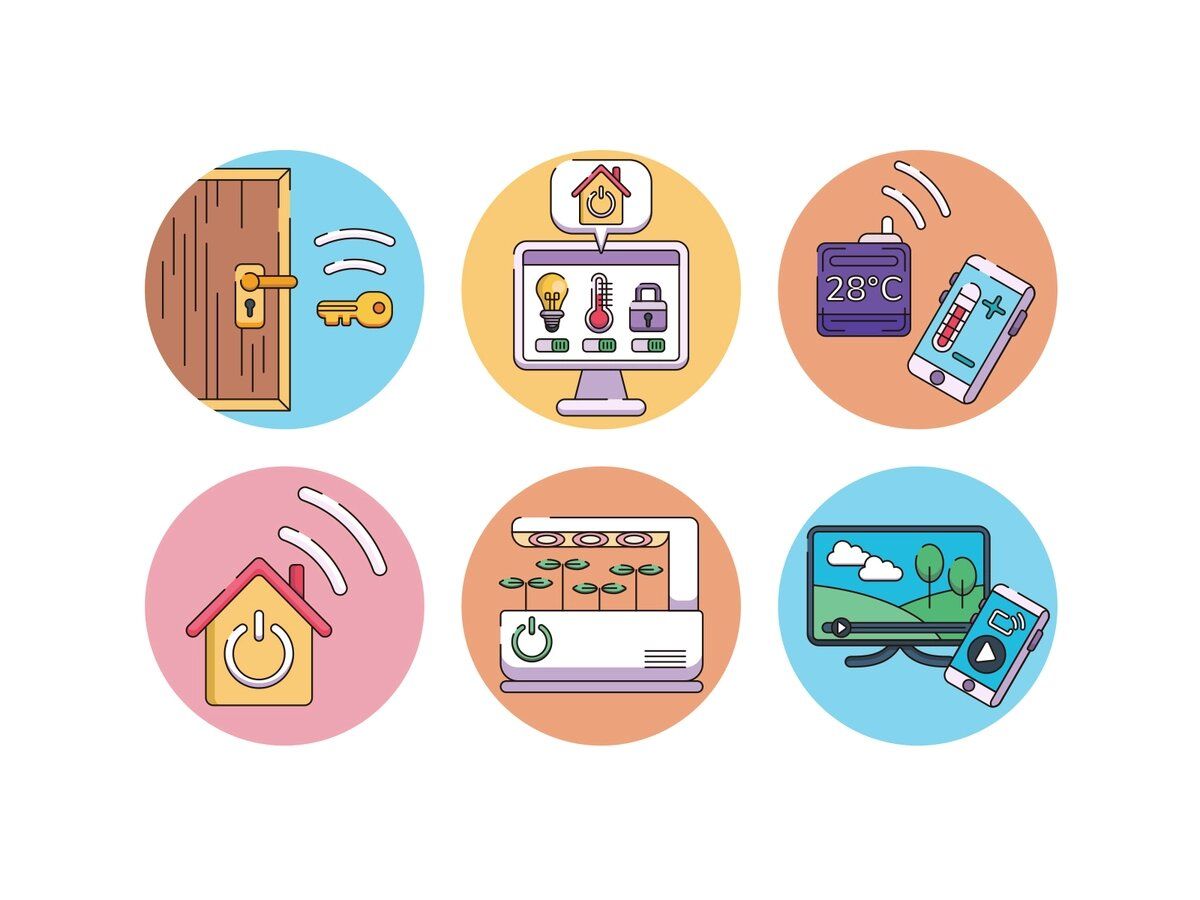Contents
IoT Security Issues, Challenges, and Solutions to Protect Your Device
Published: April 16, 2025
21 min read
In this article, you'll learn:
1
❓ What Is IoT Security?
2
✍️ The Importance of IoT Security
3
🔎 Identification of IoT Devices
4
🔑 IoT Device Authentication
5
🔐 Encryption
6
🗂️ Heterogeneity of Connected Devices
7
🔓 Additional IoT Security Challenges to Describe
8
✅ IoT Security Best Practices
9
📝 How Stormotion Addresses IoT Security Challenges
10
💡 Takeaways
In the age of technology, the development of IoT devices and software is paralleled by the rise of malware and security threats. When deploying IoT solutions, you need to ensure consumer IoT security by safeguarding sensitive information from unauthorized access.
Did you know that, according to a recent Keyfactor and Vanson Bourne's report, 97% of businesses struggle to secure their IoT and connected devices? To tackle this growing challenge, companies plan to boost their IoT device security budgets, with an anticipated increase of 45% over the next five years.
In this article, we’ll examine the key IoT security challenges you should be aware of and explore potential solutions to address them during the project development phase, all while avoiding overspending.
❓ What Is IoT Security?
IoT security recommendations refer to the framework, instruments, and procedures developed to keep connected devices and Internet of Things networks safe from malefactors and cyberattacks.
Network-level security involves safeguarding the devices, the data they transmit and store, and their connections to networks, including low power IoT networks. This ensures that IoT systems operate with integrity, confidentiality, and availability.

Securing IoT devices is crucial for protecting individual privacy and data (image by Sharath Gowda)
With the rise of IoT, which includes a wide range of smart devices such as fitness equipment, e-scooters, industrial sensors, and more, addressing IoT devices security issues is crucial to ensuring their efficiency and proper functioning.
This is especially relevant when considering the growth of wearable technology and the Internet of Things, where personal data security becomes even more critical.
✍️ The Importance of IoT Security
The Internet of Things has fundamentally transformed everyday objects into a network of interconnected machines capable of collecting and sharing vast amounts of data. This transformation has enabled advanced applications across various sectors, including:
According to Statista, the global number of IoT devices is projected to nearly double, rising from 18 billion in 2024 to over 32.1 billion by 2030.
In 2024, the consumer segment represented about 60% of all IoT and connected devices.
Key industry sectors currently exceeding 100 million connected IoT devices include electricity, gas, steam and A/C, water supply and waste management, retail and wholesale, transportation and storage, and government.
While this connectivity offers remarkable efficiency and convenience, it also brings many concerns, particularly related to the Internet of Things security issues. Ensuring the security of these devices is essential to protect the privacy and integrity of the data they collect and transmit.

IoT security breaches can lead to significant economic consequences, including financial losses from theft or service disruptions (image by Ramotion)
Cyber criminals can gain unlawful access to personal information, corporate data, and infrastructure by exploiting vulnerabilities in IoT devices. Such hacks can have a wide range of consequences, from privacy invasions to severe disruptions caused by infected devices, and even physical harm.
These risks can be mitigated through BLE app development services and tools like React Native BLE manager.
Viakoo’s 2024 IoT Security Crisis: By the Number report states that half of all IT companies have faced IoT-related cyber attacks in the past year, with 44% classified as severe and 22% directly impacting business operations.
Securing IoT devices is crucial for safeguarding sensitive data, appliances, and overall well-being, especially given the growing IoT data security issues today. To build a trustworthy product and ensure the highest level of security, you should focus on the following key issues:
- Identification
- Authentication
- Encryption
- Heterogeneity
Let’s explore the key security challenges and how to address them.
🔎 Identification of IoT Devices
With the rapid development and prototyping in IoT, identification issues often arise — it can be challenging to determine whether a device is malicious or "friendly." To distinguish between them, you should implement a robust identification system.
In the IoT ecosystem, there are essentially two categories: identifiers and entities to be identified. The key to a successful identification process lies in securing the identifier, not the entity itself. This is where security challenges for IoT devices come into play. IoT security relies on whether the identifier is trustworthy and protected from tampering by third parties.
Therefore, to ensure safe identification, you should choose a highly secure system that can serve as the "identifier" and prevent the connection of unsecured devices.
How to Address These IoT Security Challenges?
As of now, one of the most effective IoT device identification technologies is a Public Key Infrastructure (PKI) with the use of digital certificates.
Public Key Infrastructure (PKI) is a technology that ensures secure connections while enabling the identification and authentication of both users and devices.
According to Keyfactor and Vanson Bourne's report, 93% of organizations rely on PKI technology to issue digital identities and manage certificates, with the majority adopting a hybrid approach that combines active third-party and in-house solutions.
PKI Components that Make the System Work
The challenges of securing IoT devices lie in implementing robust technologies to safeguard connections, authenticate identities, and protect data integrity. Public Key Infrastructure (PKI) is a foundational technology in this regard, leveraging several critical components:
- Certificate Authorities (CA): CAs play a pivotal role in making PKI secure and reliable. They verify connection attempts and issue certificates after identity validation is completed. This validation step is essential to prevent hackers from impersonating trusted parties to gain unauthorized access to data.
- Digital Certificates: A digital certificate is an electronic password or file designed to prove the authenticity of a device, ensuring trust within the IoT ecosystem.
- Digital Signatures: A digital signature is a security method that safeguards the integrity of data, ensuring it cannot be tampered with without alerting the recipient.
- Chain of Trust: The chain of trust is a security system that validates a certificate by tracing it back to the CA’s root certificate. The connection is deemed trusted and secure if the chain successfully links to a valid root certificate.
- Encryption Keys: Encryption keys are paired elements that facilitate the encryption and decryption of information, providing an additional layer of security for data flow.
PKI System Overview
As we explore the mechanisms of PKI, you should also understand how they work together to address IoT risks and challenges effectively. Here’s how the components of PKI function as a cohesive system:
- Certificate Validation: Before issuing a certificate, the CA validates the server and determines whether the connection can be secure, minimizing the risk of unauthorized access.
- User Verification: After the CA validation, the user verifies the server’s certificate with the assistance of the chain of trust, ensuring the authenticity of the connection and mitigating potential challenges like impersonation attacks.
- Data Encryption: If the first two steps are successful, the data is encrypted using the “public key,” safeguarding it during transmission.
- Data Decryption: On the other side of the connection, the data is decrypted using the corresponding “private key,” ensuring secure and seamless communication within the IoT ecosystem.
Addressing IoT security problems challenges and solutions requires a robust approach to identification, with Public Key Infrastructure (PKI) standing out as a reliable solution.
By leveraging critical components like Certificate Authorities, digital certificates, and encryption keys, PKI effectively tackles these issues, ensuring secure connections, authenticating devices, and protecting data integrity within the IoT ecosystem.
🔑 IoT Device Authentication
Most IoT devices, especially those managed through companion mobile app development, play a critical role in projects like how to develop a connected car application, as they require optimized storage and efficient data handling. Their primary goal is to focus exclusively on gathering and transferring sensitive data from various sources in a short amount of time.
However, because such vulnerable devices cannot quickly counteract malicious intents, they are prone to cyber intrusions, highlighting key IoT security challenges and solutions.
Challenges for Secure IoT Authentication
Since the resources available to IoT devices are limited, the authentication process should be simpler than, for instance, authenticating a user. To tailor this process to the specific case, it’s crucial to determine the most suitable authentication model.
The two most common models for securing the authentication stage of an IoT device and addressing challenges for secure IoT are:
- Shared Secret Authentication (Symmetric Cryptosystem)
- Public Key Authentication (Asymmetric Cryptosystem)
Let’s take a closer look at each!
Shared Secret Authentication (SSA)
SSA is a method where two parties prove their identities to each other by using a pre-established secret, such as a password, PIN, or a cryptographic key.
The purpose of SSA is to securely exchange data — known in cryptography as a “shared secret” — after communication has been established, as is typical in symmetric cryptosystems.
The most common authentication method for this model is the challenge-response method. To mitigate IoT security risks, the party requiring authentication must provide the correct “response” to the “challenge” issued by the other party.

The most common method for authenticating IoT devices in the SSA model is the challenge-response approach, which involves password input (image by Oleksandr Mosiichuk)
For example, the simplest type of such authentication is the well-known password authentication. In this case, the “challenge” is a party’s password request, and the valid “response” is the correct password input.
However, to consider this authentication model secure, you should address IoT security concerns, such as ensuring there are no intruders between the two communicating parties attempting to intercept a valid response for malicious purposes.
Public Key Authentication (PKA)
PKA is a cryptographic method for verifying the identity of users, devices, or systems without requiring a traditional password. This model for authenticating IoT devices also utilizes the Public Key Infrastructure (PKI), as described in the identification section of this article.
As an asymmetric model, PKA technology provides a much higher level of Internet of Things security and data integrity. However, increased authentication complexity requires more processing time, which may not be ideal when operation speed is a priority.
One of the key challenges in implementing PKA is ensuring the secure generation, storage, and distribution of public and private keys. Any compromise of these keys can result in serious IoT security threats.
IoT device authentication is critical for addressing IoT security challenges, particularly for vulnerable devices prone to cyber intrusions. Shared Secret Authentication offers simplicity and speed, while Public Key Authentication ensures robust security and data integrity.
Protecting IoT devices requires proactive measures and tailored solutions. Contact us to explore customized security strategies and ensure your IoT systems are resilient against cyber threats!
🔐 Encryption
The foundation of IoT systems, which significantly impacts IoT software development cost, is the constant data flow between connected devices. When it comes to securing this data flow, the top priorities are:
- Maintaining data integrity: Ensure no third party can manipulate or falsify information within your IoT systems.
- Ensuring confidentiality: Grant restricted access to data only to personnel who are authorized to receive it, to prevent data breach.
To solve these security challenges in Internet of Things, we need to find a solution that satisfies both of these requirements.
IoT Data Security Issues
Both of these data security priorities can be managed by implementing data encryption and decryption, which are crucial components in addressing IoT security issues, where data sensitivity is high. There are two types of encryption systems:
- Symmetric encryption: Both encryption and decryption require a single cryptographic key.
- Asymmetric encryption: Both operations require multiple cryptographic keys: a “public” key for encryption and a “private” key for decryption.
While symmetric systems are simpler and offer the advantage of high-speed data encryption, asymmetric systems prioritize security and require authentication as an additional step.
Let’s take a closer look at the encryption algorithms used in IoT, a critical component in addressing IoT security problems and solutions.
Advanced Encryption Standard (AES) | AES is the most commonly used algorithm for encrypting data worldwide. This symmetric encryption standard is often used in 128-, 192- or 256-bit forms and is known for its high resistance to IoT attacks and malicious intrusions. | |||
Rivest-Shamir-Adleman Algorithm (RSA) | ThThe RSA algorithm is widely recognized as the most common asymmetric encryption method in the world. Its primary advantage is its high scalability concerning encryption key lengths. Even if short encryption keys are brute-forced, it is always possible to secure the data using longer keys, making brute-forcing incredibly difficult. | |||
Digital Signature Algorithm (DSA) | The DSA is another example of asymmetric encryption and is often compared to RSA in terms of strength. Unlike RSA, which encrypts messages with private keys and decrypts them with public keys, DSA generates two 160-bit numbers for a digital signature based on the message and the private key. In comparison, DSA and RSA complement each other: DSA is faster for verification and decryption, while RSA excels in encryption and signing. | |||
Blowfish | Blowfish is a symmetric encryption algorithm that remains relevant due to its availability as a free, public-domain tool. Rather than encrypting an entire message at once, Blowfish processes the message by splitting it into 64-bit blocks and encrypting each block individually. Its key length is variable, ranging from 32 to 448 bits. | |||
Encryption plays a vital role in solving IoT security problems by safeguarding data integrity and confidentiality. Symmetric encryption, like AES and Blowfish, ensures fast and efficient data protection, while asymmetric methods, such as RSA and DSA, offer robust security and scalability.
🗂️ Heterogeneity of Connected Devices
Heterogeneity is one of the most significant security challenges in the Internet of Things sphere. With the vast variety of IoT devices and countless potential security issues, it’s nearly impossible to predict and counter every single cyber intrusion in each unique case.
A key factor in addressing this challenge is effective IoT device management, as each device comes with its own security requirements and must be treated individually. This tailored approach is critical, given the wide range of IoT vulnerabilities and incidents that demand customized solutions for securing each unique device.
IoT Security Risks With Heterogeneity in IoT
To address the heterogeneity issue in Internet of Things security challenges, we recommend using the Information-Driven Architecture (IDRA) for wireless sensor networks. IDRA is designed to create, store, and manage packet interactions within network services. In heterogeneous IoT systems, the same node can handle various types of packets.
IDRA interprets incoming packets of any type using a large number of descriptors, ensuring a secure connection between diverse IoT devices. When selecting outgoing packet types, IDRA identifies both the Media Access Control (MAC) and routing protocols required for the specific packet type and automatically transmits the packet using the correct MAC protocol.

The IDRA architecture is designed to establish connections between heterogeneous IoT devices, regardless of their protocol type (image by Dighital)
Let’s take a closer look at the benefits of implementing IDRA architecture for IoT devices, including its role in mitigating IoT security risks:
- IDRA requires minimal resources and is backward compatible.
- It can determine the type of incoming packet and drop any packets that are unrecognized by the architecture.
- IDRA enables connection creation without the need for a gateway.
- The architecture supports communication between devices, even when different MAC protocols are used by devices from various manufacturers.
The heterogeneity of IoT enabled devices presents a significant security challenge due to the unique security requirements of each device. To address this, the Information-Driven Architecture (IDRA) offers an effective solution by enabling secure connections between diverse IoT devices, regardless of their protocol types.
By ensuring compatibility, minimizing resource use, and facilitating seamless communication, IDRA helps mitigate IoT security risks and simplifies managing the complexities of heterogeneous systems.
🔓 Additional IoT Security Challenges to Describe
As you already understand, you may encounter some challenges of securing IoT devices. We’ve covered issues related to identification, authentication, encryption, and heterogeneity, but those may not be the only concerns.
In this section, our developer, Sergei Shemshur, will discuss additional challenges that may arise when developing IoT app and implementing IoT security.
Hardware-based Security
Hardware-based security involves using specialized integrated circuits for encryption, rather than relying solely on software solutions. This approach significantly enhances the system's robustness, but it may not always be feasible due to the increased cost per device manufactured.
For example, in automotive applications, you could use V2X communication or MAX10 FPGA chip.
Unique Encryption Keys for Each Device
Using unique encryption keys for each device ensures that data remains protected against interception, even if a third party extracts the encryption key through reverse engineering. These unique keys can also serve as a means of authenticating the device.
Physical Security
Using tamper-resistant or tamper-evident packaging can greatly enhance device security. If the device detects tampering, it can respond appropriately by generating alerts, entering lockdown mode, or even self-destructing by wiping its storage.
Secure Boot
For more complex systems, enabling Secure Boot ensures that the device can only boot with software verified by the manufacturer. This prevents unauthorized firmware from being loaded onto the device.
Additional IoT security challenges — such as hardware-based security, unique encryption keys, physical security, and secure boot— highlight the complexity of securing IoT systems. While these solutions can significantly enhance device protection, they may come with trade-offs in cost and implementation. Addressing these challenges is essential for building a robust and secure IoT ecosystem that can withstand various cyber threats.
If you have any questions or would like to explore IoT security issues and solutions further, feel free to reach out to us. We’ll work together to resolve your concerns!
✅ IoT Security Best Practices
To navigate the complex landscape of IoT security problems and solutions, here are some best practices that individuals and organizations can follow:
— Keep devices and software secure
Frequently update your IoT devices with the latest firmware and patches to address vulnerabilities. Manufacturers regularly release updates that can fix security problems, so ensuring either automatic updates or manual checks is essential.
— Set strong authentication
Many IoT devices have simple or common passwords that can be easily cracked. To add an extra layer of security, always use multi-factor authentication (MFA) whenever possible.

You should incorporate privacy considerations into the design of your IoT systems (image by Vektora)
— Secure Network Connections
Ensure that data transmitted to and from IoT devices is encrypted, and use secure protocols for communication between devices. Additionally, encrypt your Wi-Fi network by leveraging strong encryption methods such as WPA2 or WPA3.
— Implement Network Segmentation
Use network segmentation to isolate IoT devices from other network assets as a security measure, helping to limit the impact of potential security breaches.
— Regulate and Audit IoT Devices at Regular Intervals
Maintain a log of all IoT devices connected to your network and implement regular IoT monitoring to detect any suspicious activities. Use security tools to scan network traffic and identify irregularities, helping address IoT security concerns and ensure the integrity of your digital space.
— Educate and Train Users
Security is crucial when it comes to IoT, and education is key. Teach users about the potential dangers and instruct them on adopting security measures. It's also essential for users to be aware of phishing attempts and to learn how to recognize and avoid them.
— Leverage IoT Security Solutions
Consider implementing professionally designed IoT security solutions that offer features such as device discovery, risk assessment, vulnerability prevention, and network segmentation.
If you’re planning to build a smart home application, exploring the cost of an app like AT&T Smart Home Manager will help you allocate resources for critical security features such as encryption, authentication, and network protection.
📝 How Stormotion Addresses IoT Security Challenges
Since we offer IoT development services and work on various projects, our developers have extensive experience tackling the challenges of securing IoT devices. Below are three examples of how Stormotion successfully addressed IoT security concerns and provided tailored solutions for our clients.
Norsk Guardian
Norsk Guardian allows users to monitor their boat batteries and ensure safe trips. However, a significant IoT security concern arose from the environment in which the app operates.
Fishing competitions often involve substantial prizes, and competitors frequently intercept signals from boats to hack into each other's devices. This posed a risk to Norsk’s customers, as malicious actors could tamper with battery data, potentially causing disastrous consequences at sea.

We implemented a PIN code and MFA system in the Norsk Guardian app to address the most common IoT security threats (image by Stormotion)
Our Solution
To address these IoT security issues, we implemented a robust solution to prevent unauthorized access. We introduced a PIN code and MFA system that secures the communication between the boat's batteries and the app. This prevents competitors from intercepting signals and accessing critical battery data.
Additionally, the app continuously monitors battery parameters like temperature, voltage, and charge levels. If the app detects any abnormal readings that may indicate a potential battery failure or a risk of short-circuit, it immediately sends an alert to the user.
This combination of security measures ensures that Norsk’s customers can enjoy their maritime adventures with peace of mind, knowing their battery systems are secure.
Client experiences say more than we ever could — here’s what they had to say:
STEPR
STEPR, a company that creates innovative stair-climbing fitness machines, needed an Android console app to control their machines and provide customized training programs.
However, security challenges arose due to the need to integrate the app with third-party systems, navigate Android’s security restrictions, and ensure that the app performed well during rigorous physical workouts.

During the development of the STEPR console app, we bypassed Android’s security limitations (image by Stormotion)
Our Solution
To overcome these security challenges for IoT devices, we employed several advanced strategies. First, we bypassed Android’s security limitations by leveraging hidden APIs and collaborating with STEPR's partners. This allowed us to establish a stable serial connection between the console and the fitness machine, enabling real-time data transmission for precise control over workout parameters.
In addition, we integrated features like over-the-air updates (OTA) and real-time metrics display, all while ensuring the app’s security. By leveraging secure protocols and implementing rigorous testing, we ensured that the app not only provided seamless control and customization but also adhered to best security practices to protect user data.
Milence
Milence, an EV infrastructure provider, needed an application to manage charging sessions and payments for electric vehicle (EV) users.
The app needed to meet stringent security requirements and integrate with third-party systems, including a native payment terminal app and Milence’s API. The primary security concern was ensuring that user data, particularly financial transactions, remained secure during the entire process, from initiating charging sessions to completing payments.

Stormotion added encryption techniques to protect the payment information of Milence’s users (image by Stormotion)
Our Solution
To address Milence’s IoT risks and challenges, we implemented several key security measures. First, we ensured that the app adhered to the terminal vendor’s strict security protocols by passing Non-Disturbance Testing (NDT).
We also incorporated encryption techniques like tokenization to protect sensitive financial data during payment transactions. Furthermore, we integrated the app with Milence’s API while maintaining a secure connection between the payment terminal and the app.
Regarding user data security, we ensured robust error handling and encrypted communication between the app and the payment terminal. The app’s security was tested rigorously, passing all necessary security audits to ensure that users’ financial data remained protected.
Additionally, we focused on maintaining high-quality standards by using continuous code quality monitoring tools like SonarCloud, which ensured that the app was secure, reliable, and scalable.
At Stormotion, we take the Internet of Things security issues seriously, and our expertise allows us to deliver reliable and secure solutions for our clients. From securing critical data and protecting financial transactions to preventing unauthorized access, we help our clients build IoT systems that they can trust.
💡 Takeaways
IoT security involves tools and frameworks to protect devices, data, and networks from malicious actors. Let’s recap how to address critical security challenges in IoT:
- Identification: Ensuring robust systems like Public Key Infrastructure (PKI) for secure device recognition.
- Authentication: Implementing Shared Secret Authentication or Public Key Authentication for secure data exchange.
- Encryption: Utilizing symmetric (AES, Blowfish) and asymmetric (RSA, DSA) encryption for data integrity and confidentiality.
- Heterogeneity: Addressing diverse device protocols with architectures like Information-Driven Architecture (IDRA).
- Additional Measures: Hardware-based security, unique encryption keys, physical tamper protection, and Secure Boot mechanisms enhance overall device protection.
- Best Practices: Frequent software updates, strong authentication methods, network encryption, segmentation, and user education are pivotal.
If you have any questions about IoT security challenges or need help with creating a secure IoT project, let us know. We’ll be happy to help you meet your business goals with an outstanding product!
Our clients say
![Stormotion client David Lesser, CEO from [object Object]](/static/93e047dadd367691c604d8ffd1f54b58/b0e74/david.png)
They were a delight to work with. And they delivered the product we wanted. Stormotion fostered an enjoyable work atmosphere and focused on delivering a bug-free solution.
David Lesser, CEO
Numina
Was it helpful?
Questions you may have
Take a look at how we solve challenges to meet project requirements
Why is security a challenge for IoT devices?
IoT devices face security challenges due to their connectivity, diversity, and limited resources. These factors hinder robust encryption and authentication while increasing exposure to risks like unauthorized access and data breaches. Risk analysis, continuous monitoring, and automated security protocols are essential to mitigate these vulnerabilities.
What are the biggest IoT security risks and challenges?
The biggest IoT risks and challenges include lack of standardization, weak authentication, inadequate software and network security, insufficient privacy protections, inability to update devices, and limited visibility, making systems vulnerable to unauthorized access and unaddressed threats.
What are examples of attacks on IoT systems and IoT devices?
Examples of attacks on IoT systems and devices include brute force attacks exploiting default passwords, ransomware targeting healthcare IoT systems to lock users out of critical data, and botnets leveraging legacy devices to compromise data privacy or disrupt markets like cryptocurrency. Physical device attacks can also occur, enabling attackers to steal data or gain network access.
What role does device authentication play in IoT security?
Device authentication ensures that only authorized users and devices can access the IoT system. It helps prevent unauthorized access and attacks, protecting the network and data.
What is the impact of limited processing power and memory on IoT device security?
Limited processing power and memory restrict the ability of IoT devices to support robust security features such as encryption, authentication, and access control, making them more vulnerable to attacks.
What challenges arise from the sheer volume of connected devices in IoT ecosystems?
The vast number of connected devices expands the attack surface, making it challenging to secure all devices and manage their interactions securely. It also complicates asset management and increases the risk of unauthorized devices (shadow IoT) within the network.
How do IoT security issues affect consumer privacy?
IoT security issues can lead to unauthorized access to personal data collected by IoT devices, resulting in privacy breaches, identity theft, and misuse of sensitive information.
What measures can users take to secure their IoT devices at home?
To secure their IoT devices at home, users can take protective measures such as changing default passwords, regularly updating device firmware, using secure Wi-Fi networks, and disabling unnecessary features to minimize vulnerabilities.
What role does firmware and software updates play in mitigating IoT security risks?
Firmware and software updates are crucial in mitigating IoT security risks by providing patches that address known vulnerabilities. Regular updates, combined with automation tools that streamline the process, are essential for protecting devices from emerging threats and ensuring ongoing security.
Can IoT devices be used in DDoS attacks?
Yes, IoT devices can be co-opted into botnets and used in Distributed Denial of Service (DDoS) attacks to overwhelm target networks with traffic, leading to service disruptions.
Read also




